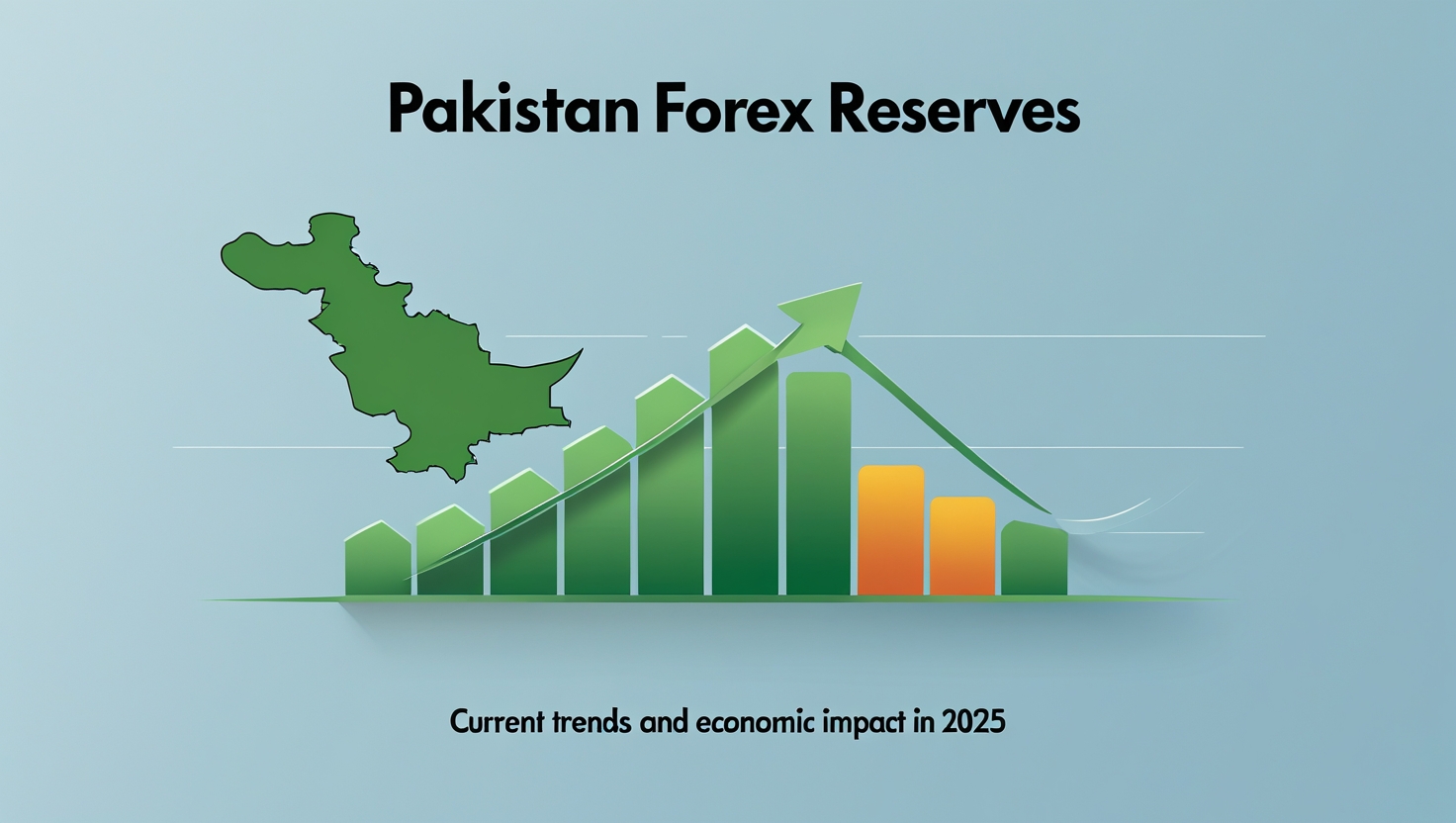
Pakistan forex reserves have undergone a dramatic turnaround in 2025, marking a recovery from crisis. In early 2023, reserves plunged to critically low levels – the State Bank of Pakistan (SBP) held only about $3 billion (less than three weeks of import cover). By mid-2025, total foreign exchange reserves had rebounded to nearly $16.9 billion, buoyed by an International Monetary Fund (IMF) bailout and improved external balances. This article reviews Pakistan’s forex reserves quarter-by-quarter in 2025, compares them with 2023–24, and discusses the implications for inflation, imports, currency stability, and external debt.
Pakistan Forex Reserves Quarterly Breakdown (2025)
| Quarter | Total Forex Reserves (Approx.) | SBP Share | Key Drivers |
|---|---|---|---|
| Q1 2025 | $15.0 billion | ~$10.5B | Record remittances, IMF stability |
| Q2 2025 | $16.6–$16.9 billion | ~$11.7B | IMF tranche, confidence uptick |
| Q3 2025* | Projected >$17 billion | TBD | Export uptick, remittance surge |
| Q4 2025* | Projected moderate rise | TBD | Dependent on IMF compliance & reform |
*Forecasts based on current trajectory and IMF disbursement schedule.
Pakistan Forex Reserves in Q1 2025: Stabilization After Crisis
In Q1 2025, Pakistan’s forex reserves stabilized and began to recover. The new IMF program and fiscal tightening helped lift total reserves to around $15 billion by March (up from ~$14 billion a year earlier). Key contributors included:
- Strong remittances: March 2025 recorded $4.1 billion – an all-time high.
- Lower current account deficit: Imports were controlled by policy tightening.
- SBP interventions: Moderate rupee support and debt rollover deals.
Pakistan Forex Reserves in Q2 2025: IMF Boost and Rising Confidence
In Q2 2025, an IMF disbursement of about $1 billion in May helped boost SBP reserves further. Highlights from the quarter:
- SBP reserves crossed $11.7 billion by mid-June.
- Total reserves hit $16.9 billion, a multi-year high.
- Rupee stabilized: PKR traded steadily around 280 against the USD.
Economist Ali Najib commented, “Rebuilding reserves boosts investor confidence, strengthens the rupee, and enhances the country’s ability to pay for imports and service debt.”
Comparing Forex Reserves of Pakistan: 2023 to 2025
| Year | Total Reserves | SBP Reserves | Status Summary |
|---|---|---|---|
| 2023 (Q1) | <$9B | ~$3B | Crisis point; default risks peaked |
| 2024 (Q2) | ~$14.3B | ~$9B | Partial recovery post-IMF standby |
| 2025 (Q2) | ~$16.9B | ~$11.7B | Highest level since 2021 |
Economic Impact of Rising Forex Reserves
The rising forex reserves have had a positive ripple effect across key macroeconomic indicators:
Inflation Control
- April 2025 inflation: 0.3% YoY, the lowest in 60 years.
- Stable rupee reduced cost-push inflation via cheaper imports.
Currency Stability
- Rupee hovered steadily around PKR 280 per USD.
- Less need for panic interventions or emergency rate hikes.
External Debt Servicing
- With over $8 billion due in FY2025, a healthier reserve position reduces rollover risk.
- Debt obligations being met on schedule, improving creditworthiness.
Investor Confidence
- Risk premiums on sovereign bonds declined.
- Equity markets saw minor rallies in tandem with FX inflows.
Expert Forecast: Will Pakistan Sustain the Gains?
Future projections remain cautiously optimistic.
“External buffers are notably stronger, but the outlook remains vulnerable to policy slippage or external shocks,” said IMF Deputy Managing Director Nigel Clarke in a June statement.
Conditions for Sustainable Reserve Growth:
- Continued IMF compliance and second half disbursements.
- Growing export base and diversified remittance corridors.
- Fiscal discipline and reduced reliance on short-term borrowings.
Future Outlook for 2025 and Beyond
Looking ahead, Pakistan’s forex reserves trajectory is cautiously optimistic but uncertain. If Pakistan stays on track with IMF conditions, further disbursements in late 2025 will help bolster reserves. However, sustainability is not guaranteed. IMF Deputy Managing Director Nigel Clarke noted that “external buffers [are] notably stronger” but warned that “risks to the outlook remain elevated”. The country faces large external debt repayments (over $8 billion due in FY2025), which will test its reserves. Maintaining a healthy reserve cushion will require disciplined reforms, prudent debt management, and higher exports and remittances.
Conclusion
Pakistan’s journey from a forex crisis in 2023 to reserve recovery in 2025 underlines the power of fiscal discipline and strategic international engagement. However, maintaining this progress demands sustained effort, timely IMF tranches, and domestic economic reforms. The nation’s forex reserves are no longer in the danger zone—but neither are they fully secure. The real test lies in turning this recovery into a long-term buffer that anchors growth and shields against future shocks.
FAQs
What is the current status of Pakistan’s forex reserves in 2025?
As of mid-2025, Pakistan’s total foreign exchange reserves are about $16–17 billion, with the SBP holding roughly $11–12 billion and commercial banks around $5 billion.
How have the forex reserves of Pakistan changed from 2023 to 2025?
They have risen dramatically—from about $9 billion in early 2023 to nearly $17 billion by mid-2025—reflecting policy reforms and IMF support.
Why are forex reserves important for Pakistan’s economy?
They ensure the country can pay for imports, stabilize the rupee, service external debt, and signal financial stability to investors and lenders.
How do forex reserves affect inflation and the rupee’s value?
High reserves allow currency stability, which keeps import costs low and inflation in check. This was visible in early 2025’s record-low inflation.
What is the outlook for Pakistan’s forex reserves?
Promising, but conditional. IMF flows and economic reforms will determine whether the current momentum is sustainable through year-end.

















